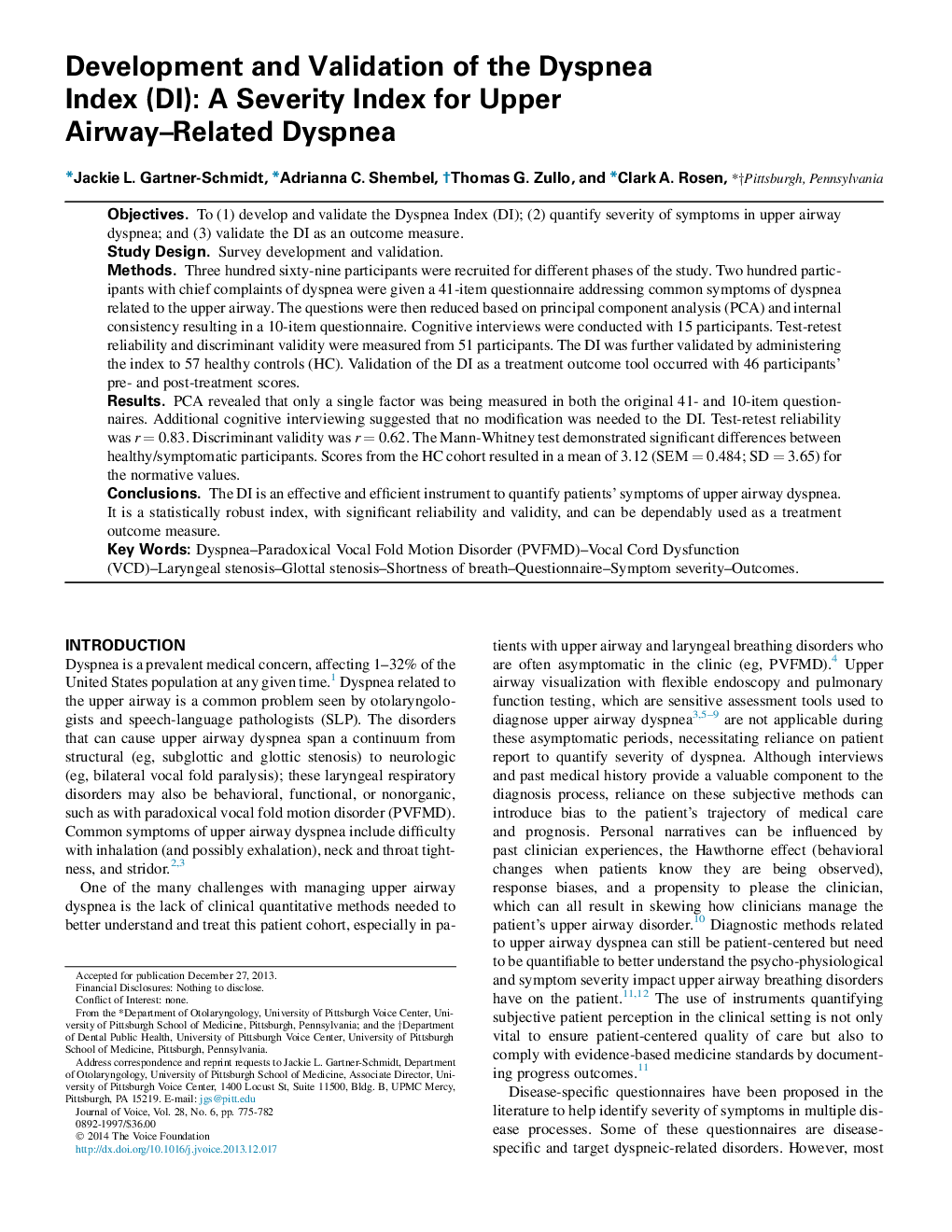| Article ID | Journal | Published Year | Pages | File Type |
|---|---|---|---|---|
| 1101616 | Journal of Voice | 2014 | 8 Pages |
ObjectivesTo (1) develop and validate the Dyspnea Index (DI); (2) quantify severity of symptoms in upper airway dyspnea; and (3) validate the DI as an outcome measure.Study DesignSurvey development and validation.MethodsThree hundred sixty-nine participants were recruited for different phases of the study. Two hundred participants with chief complaints of dyspnea were given a 41-item questionnaire addressing common symptoms of dyspnea related to the upper airway. The questions were then reduced based on principal component analysis (PCA) and internal consistency resulting in a 10-item questionnaire. Cognitive interviews were conducted with 15 participants. Test-retest reliability and discriminant validity were measured from 51 participants. The DI was further validated by administering the index to 57 healthy controls (HC). Validation of the DI as a treatment outcome tool occurred with 46 participants' pre- and post-treatment scores.ResultsPCA revealed that only a single factor was being measured in both the original 41- and 10-item questionnaires. Additional cognitive interviewing suggested that no modification was needed to the DI. Test-retest reliability was r = 0.83. Discriminant validity was r = 0.62. The Mann-Whitney test demonstrated significant differences between healthy/symptomatic participants. Scores from the HC cohort resulted in a mean of 3.12 (SEM = 0.484; SD = 3.65) for the normative values.ConclusionsThe DI is an effective and efficient instrument to quantify patients' symptoms of upper airway dyspnea. It is a statistically robust index, with significant reliability and validity, and can be dependably used as a treatment outcome measure.
